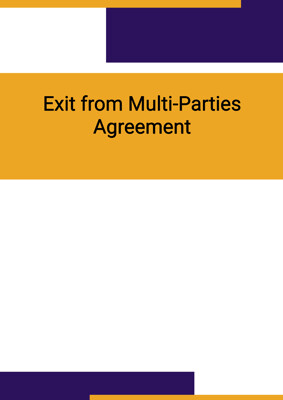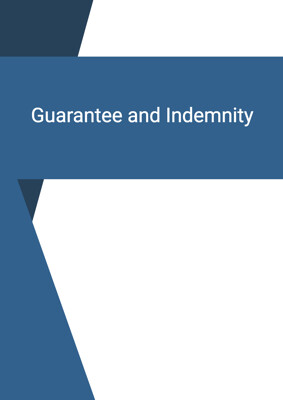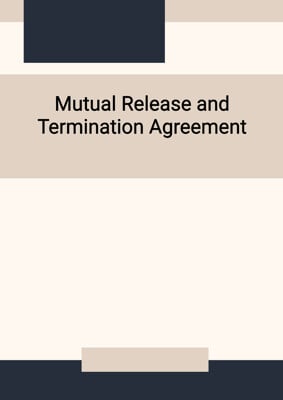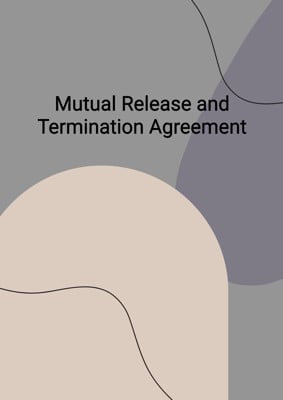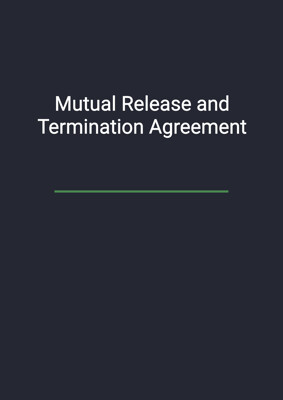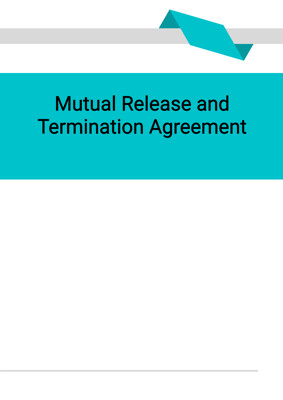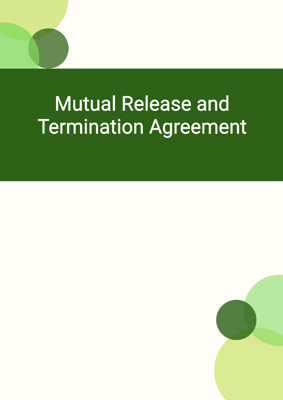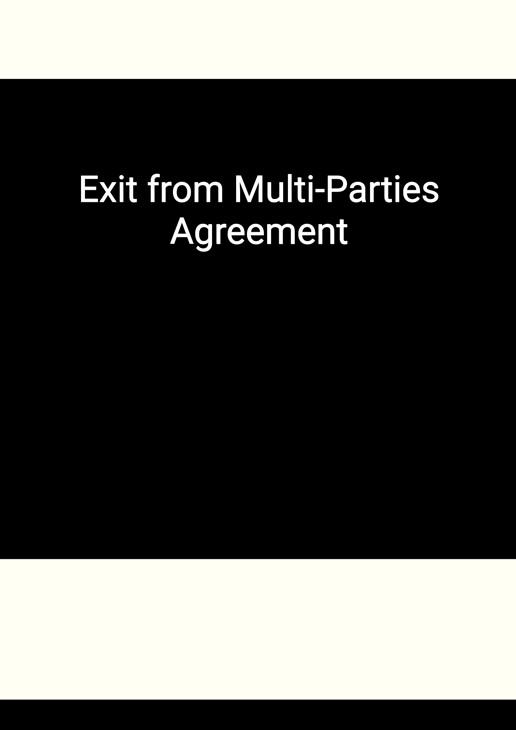
Exit from Multi-Parties Agreement
Partial Release - 3 parties
A simple exit agreement for a party to leave a 3 parties agreement and be partially released form the rights and obligations under the Agreement (excluding the rights and obligations already in existence prior to the Exit Date). The Continuing Parties continue as a parties to the Agreement.
How to Tailor the Document for Your Need?
01
Create Document
Fill in the details of the parties. You can click the "Fill with Member’s Information" button to complete it with information saved to your account.
02
Fill Information
Please fill in any additional information by following the step-by-step guide on the left hand side of the preview document and click the "Next" button.
03
Get Document
When you are done, click the "Get Document" button and you can download the document in Word or PDF format.
04
Review Document
Please get all parties to review the document carefully and make any final modifications to ensure that the details are correct before signing the document.
Document Preview
Document Description
The document titled 'Exit from Multi-Parties Agreement' is an agreement entered into by three parties: the leaver, continuing party 1, and continuing party 2. The purpose of this document is to formalize the exit of the leaver from a previous agreement between all parties. The importance of this document lies in providing a clear and legally binding framework for the exit process.
The document begins with a brief introduction, stating that the leaver and continuing parties had previously entered into an agreement on a specific date. It is then stated that the leaver has agreed to exit from the agreement, and the continuing parties have agreed to release and discharge the leaver from the rights and obligations of the agreement.
The first section of the document, titled 'Exit,' outlines the mutual undertakings of the parties. It states that the leaver gives up all their rights under the agreement as of the exit date, while the continuing parties release and discharge the leaver from their obligations. It is also mentioned that the leaver will not be entitled to exercise any rights under the agreement, while the continuing parties will continue to be bound by and comply with the agreement as if the leaver had not been a party.
The second section of the document, titled 'Interpretation,' provides definitions for key terms used in the agreement. It defines 'excluded obligations' as the liabilities and obligations of the leaver that are already accrued and do not relate to the business. Similarly, 'excluded rights' are defined as the rights of the leaver that are already accrued and do not relate to the business. 'Leaver's obligations' refer to all the liabilities and obligations of the leaver under the agreement, excluding the excluded obligations. 'Leaver's rights' refer to all the rights of the leaver under the agreement, excluding the excluded rights.
The third section of the document, titled 'Further Assurance,' states that each party agrees to perform any further acts and execute any further documents necessary to implement and give effect to the exit agreement.
The fourth section of the document, titled 'Counterparts,' clarifies that the exit agreement may be executed in multiple counterparts, with each counterpart being considered an original.
The fifth section of the document, titled 'No Third Parties Rights Under Agreements,' states that any person who is not a party to the exit agreement or the original agreement shall have no right to enforce any of its terms.
The final section of the document, titled 'Governing Law,' specifies that the exit agreement and the relationship between the parties shall be governed by and interpreted in accordance with the jurisdiction state law.
In conclusion, the 'Exit from Multi-Parties Agreement' document is of significant importance as it provides a comprehensive framework for the exit process, ensuring that all parties are aware of their rights and obligations. It covers various aspects such as the release of obligations, interpretation of key terms, further assurance, counterparts, and governing law.
How to use this document?
1. Review the existing agreement: Familiarize yourself with the original agreement between the leaver and the continuing parties to understand the context of the exit.
2. Understand the mutual undertakings: Recognize that the leaver will give up all their rights under the agreement, while the continuing parties will release and discharge the leaver from their obligations.
3. Consider excluded obligations and rights: Take into account the excluded obligations, which are the liabilities and obligations of the leaver that are already accrued and do not relate to the business. Similarly, consider the excluded rights, which are the rights of the leaver that are already accrued and do not relate to the business.
4. Perform further acts and execute documents: Ensure that all parties are willing to perform any further acts and execute any necessary documents to implement and give effect to the exit agreement.
5. Execute the exit agreement: Sign the exit agreement in multiple counterparts, with each counterpart being considered an original.
6. Understand the limitations on third-party rights: Note that individuals who are not parties to the exit agreement or the original agreement have no right to enforce any of its terms.
7. Comply with governing law: Abide by the jurisdiction state law that governs the exit agreement and the relationship between the parties.
Please note that this guidance is a summary and should not be considered as legal advice. It is recommended to consult with legal professionals for specific guidance and to ensure compliance with applicable laws and regulations.
Not the right document?
Don’t worry, we have thousands of documents for you to choose from:
